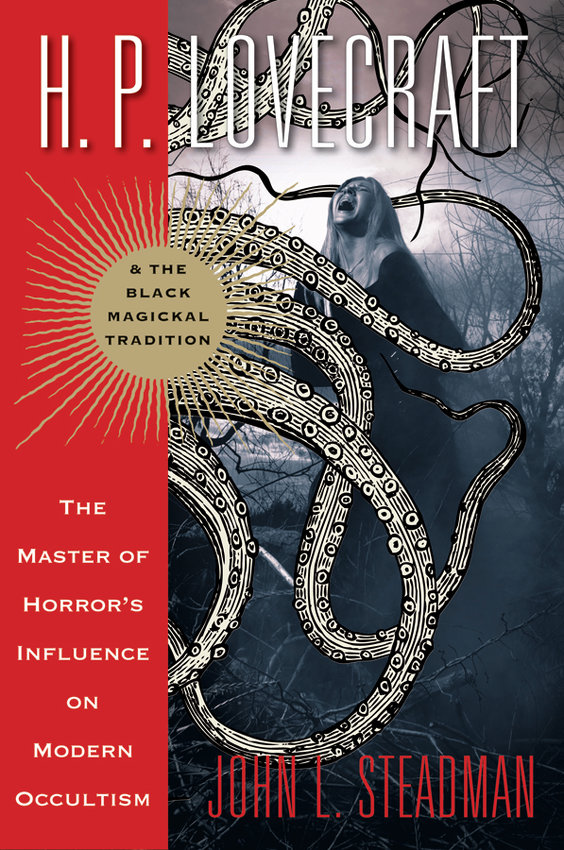From the start, let’s get a few things straight: H.P. Lovecraft was not a pseudonym, and in his world, magick is spelled with a “k.” Illusionists like Penn and Teller do not make an appearance in “H.P. Lovecraft & the Black Magickal Tradition,” the first book by Lansing Community College Professor John L. Stead man, nor should they.
Steadman isn’t in to Vegas style magic but rather the magick of the occult, including its manifestations in the writings of Lovecraft, one of the fathers of modern horror writing.
In his book, the first of a planned trilogy, Steadman takes a deep look at what legions of Lovecraft’s fans believe was his involvement with occultism and what literary scholars believe was simply great writing fueled by imagination. Steadman is a self-described magick practitioner and at one time was a member of the Thelema Lodge of occultist fraternity Ordo Templi Orientis.
Steadman’s own imagination was piqued while he was in middle school and went into the now defunct Read More Books on Lansing’s South Cedar Street. He discovered a paperback anthology with a scandalous cover.
“The lurid cover displayed a skull with flames around it,” he said.
One particular selection in the anthology attracted him more than others. It was “The Colour Out of Space,” by Lovecraft. The author had written the short story in 1927 for the science fiction magazine “Amazing Stories.”
“It really scared me and sent chills down my neck,” Steadman said, noting that the sense of fear may have been partially caused by his choice of location to read the book: a local cemetery.
One of the reasons Lovecraft’s stories are still popular today, Steadman argues, is his ability to carry a plot with an incredible sense of place and his ability to create fictional universes — much like J.R.R. Tolkein and his “Lord of the Rings” series or J.K. Rowling in her “Harry Potter” books.
Steadmen notes that Lovecraft had no interest in writing about romantic love or using unnecessary violence to tell the story. Characters were not important to Lovecraft, the cosmos was his focus. He also wrote in long, flowing paragraphs which are not particularly common in modern writing.
“He had the ability to write a good narrative — not so much character driven, but with a sense of place that is well developed,” Steadman said.
While Lovecraft is revered by many for his writing, his personal life was complicated and sometime troubling. He didn’t get along well with many people, and his written rants about life were often racist and xenophobic.
“He was not comfortable around women,” Steadman said. “He was not a people person; no small talk for him.”
Lovecraft also greatly admired the 17th century and believed the American Revolution was wrong.
“He often signed letters with ‘God Save the King,’” Steadman said.
Steadman said that one reason he began writing the trilogy — aside from setting readers straight about Lovecraft’s relationship to magick — was to show Lovecraft’s influence on 20th century pop culture, including everything from movies to heavy metal bands.
Lovecraft was born in 1890 to a prosperous family in Providence, R.I., but an economic upheaval dislocated them from the family mansion when he was a teenager. He often found himself working as a ghost writer; most distinctively for the magician Harry Houdini.
As a young man, Lovecraft was a member of the United Amateur Press Association movement, which self-published journals that were circulated only among members. Lovecraft launched his own journal, “The Conservative,” in 1915. It ran for eight years and comprised 13 issues. It included poetry, essays and the occasional rant against blacks, Jews and foreigners. Lovecraft died in 1937 at age 46.
In many ways, Lovecraft was an outsider. Steadman calls him “an alien in his own time.” Throughout the mid-20th century, Lovecraft’s work was kept alive by television adaptations of his work for shows such as Rod Sterling’s “Twilight Zone” and a big screen adaptation of his novel “The Case of Charles Dexter Ward,” oddly renamed “The Haunted Palace.”
From his earliest writings, Lovecraft drew inspiration from Edgar Allan Poe and Jules Verne. Lovecraft also adored “Grimm’s Fairy Tales” and was influenced by Irish fantasy writer Edward Plunkett, better known as Lord Dunsany. Lovecraft was a prolific letter writer, writing of more than 100,000 letters comprising an incredible 10 million words.
The cover of Steadman’s features has a tentacle wrapped around an anguished woman. Steadman said that it’s a common illustration used to depict the work of Lovecraft and is derived from his famous short story, “Call of Cthulhu,” an Atlantis-style tale written in 1926. The ideas in this short story are often described as the “Cthulhu Mythos,” a mythology created by the author.
“Today, you see it in cartoons and toys, and it’s derived from one piece of writing,” Stedman said.
John L. Steadman
Book signing and author talk 1-3 p.m. Saturday, Oct. 10 FREE Barnes & Noble 5132 W. Saginaw Highway, Lansing (517) 327-0437, barnesandnoble.com
Support City Pulse - Donate Today!
Comments
No comments on this item Please log in to comment by clicking here